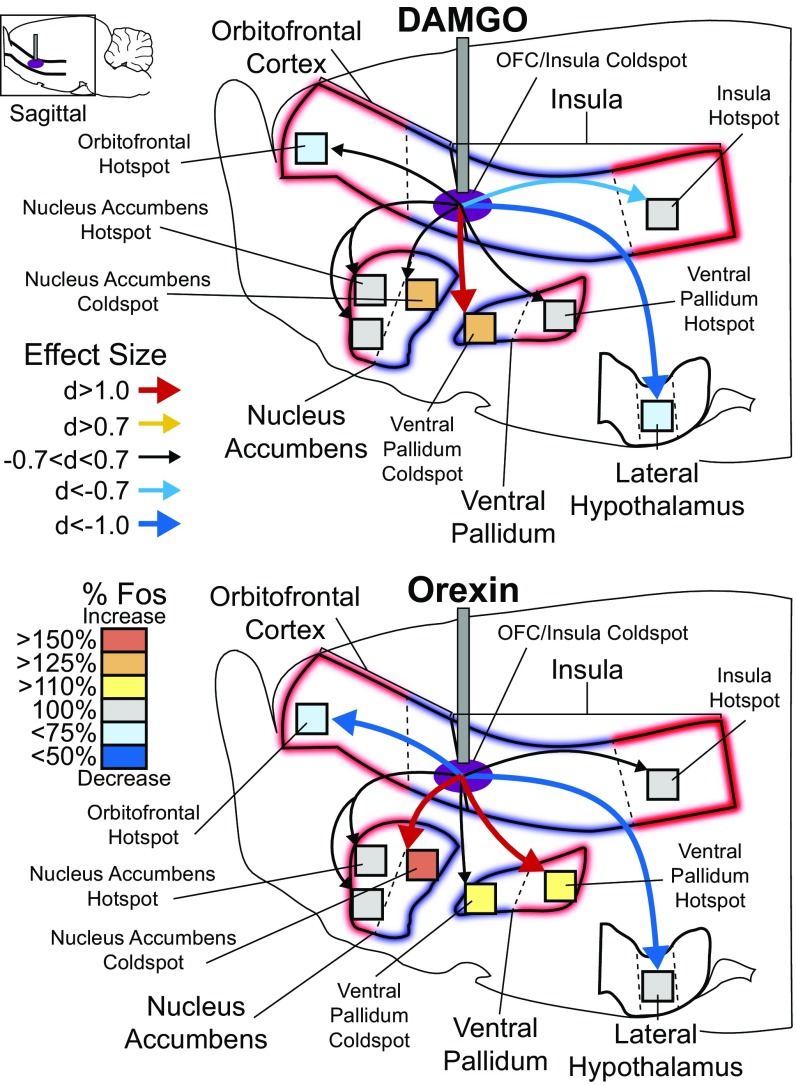Fig. 6.
Mu-opioid or orexin stimulation in OFC/insula coldspot recruits distinctive circuitry for hedonic suppression. DAMGO stimulation in the OFC/insula coldspot suppressed Fos by 27% below vehicle in the rostral OFC hotspot (d = −0.682) and suppressed Fos by 21% in the far-caudal insula hotspot (d = −0.762) relative to vehicle microinjection levels (vehicle = 100%). DAMGO stimulation in the OFC/insula coldspot did not alter Fos in the NAc rostrodorsal shell hotspot or rostroventral shell but did increase Fos in the caudal shell NAc coldspot by 125% (d = 0.531). Fos activity in the caudal VP hotspot was not changed (d = 0.154), but Fos was increased 138% in the rostral VP coldspot (d = 1.172) and was suppressed 24% in the lateral hypothalamus (d = −2.025). By comparison, orexin microinjection in the OFC/insula coldspot robustly suppressed Fos activity by 34% in the OFC hotspot (d = −1.102) but left the insula hotspot unaltered (d = 0.608). Orexin microinjection in the OFC/insula coldspot did not change Fos in the NAc rostrodorsal shell hotspot or in the rostroventral shell but did increase Fos by 152% in the NAc caudal shell coldspot (d = 1.164). Orexin microinjection in the OFC/insula coldspot also increased Fos by 124% in the VP caudal hotspot (d = 1.142) and by 120% in VP rostral coldspot (d = 0.684). Finally, orexin microinjections in the OFC/insula coldspot suppressed Fos activity by 20% in the lateral hypothalamus (d = −1.174).

